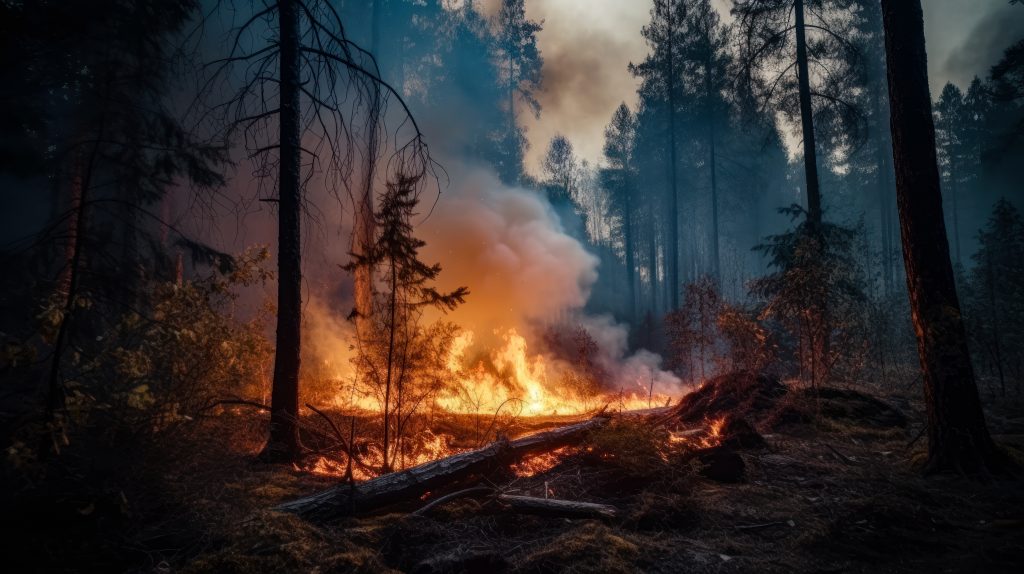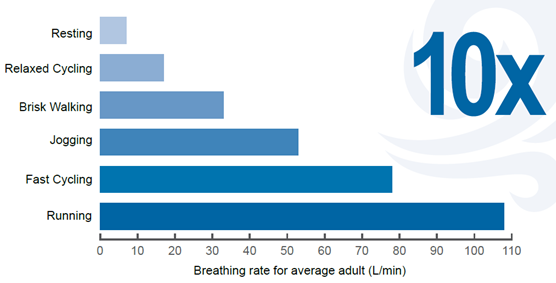Mitigating Forest Fire Smoke in Your Home: A Guide
Mitigating Forest Fire Smoke in Your Home: A Guide
Interior BC is known for its vast wilderness and beautiful forests. During dry seasons the risk of forest fires increase. While naturally caused forest fires play an integral role in nature’s cycle to replenish the nutrients in the soil and allow new growth cycles to commence, they can also release smoke that is hazardous to your health. The presence of this hazard makes it vitally important to take steps to protect yourself and your loved ones during high concentrations of smoke in the air.
What are the health effects of forest fire smoke?
When you inhale wildfire smoke, you are also inhaling very small particles that are suspended in the air, the most dangerous being in the 2.5 micron size. Wildfire smoke is a complex mixture of vapours and particles that interact and morph as they cool down with distance form the fire, and as they interact with the other pollutants present in our atmosphere. Some fires that burn structures can generator highly toxic gasses (think burning plastic) that is known as volatile organic compounds (VOC’s). VOC’s and other gases can also irritate the eyes, nose, throat, and lungs. Smoke particles follow the same pathway as other small particles such as mold spores or pollen by travelling deep into your lungs when you inhale, and are lodged in your alveoli deep within your lungs. From here, they may cause inflammation and irritation as your body either attempts to expel them by coughing or absorb them.
If you are breathing in forest fire smoke, common symptoms to watch for include:
- Headaches
- Sore throat
- Eye and nasal irritation
- Increased phlegm production
Who is affected?
Healthy individuals may be able to go about their daily lives with the presence of these symptoms being a minor inconvenience, those who are immunocompromised, diabetic, have COPD, or suffer from asthma may be extremely sensitive to the hazards in smoke. It should be noted that some healthy people with no pre-existing conditions can be sensitive to the adverse health effects, so listen to what your body is telling you.
If breathing in forest fire smoke causes you irritation, you may have to seek medical attention and/or take measures to mitigate the smoke inhalation.
14 Steps you can take to reduce your exposure to forest fire smoke
- Keep windows and doors closed. Keep windows and doors closed to prevent smoke from entering your home. Use air conditioning to circulate indoor air (return air) and make sure the fresh-air intake is closed.
- Ventilate your home after a rainfall. Rain will help “knock down” many fine particles present in the air, right after a rainfall event use this opportunity to open your windows and ventilate your home.
- Wipe down horizontal surfaces daily or as often as you can. Fine particles will eventually settle out as dust. When you mop your floors, wipe your counters and window sills you are removing the particles before they can become airborne again with breezes or natural convective currents in your home.
- Use air purifiers: Air purifiers can help remove smoke particles from the air. Consider using a high-efficiency particulate air (HEPA) filter to effectively capture fine smoke particles. These are available at most big box stores, however we recommend purchasing before forest fire season. Similar to snow shovels at first snowfall, the air purifiers sell out quickly when air pollution becomes a concern.
- Air purifier filter types: Look for air purifiers that have a) HEPA filter and b) charcoal filter. The HEPA filter is effective at removing 99.97% of particles down to 0.3 microns, and the charcoal filter is effective at deodorizing the air. When used together, you will have very clean air exhausting from the unit.
- Pro Tip – If you are unable to find an air purifier, WINMAR® Nelson rents industrial grade air purifiers that are laboratory tested for the sealing of the housing to the HEPA filter, and they also filter a significantly higher volume of air than the units you find at your local store. For example, many residential units move 300 cubic feet per minute, we have units that move 2,000 CFM or more!
- Avoid using exhaust fans: Do not use exhaust fans that can draw smoke inside, such as bathroom and kitchen fans. If you must use these, set them on a time for the least amount of time to achieve the desired result, for example, removing humidity right after a shower.
- Stay indoors: Stay indoors as much as possible, especially during the hottest and smokiest parts of the day. This will limit your exposure to smoke.
- Wear an N-95 mask. When properly fitted, these masks are effective at removing 95% of particles down to 0.3 microns in diameter. Because smoke is 2.5 microns, many particles will be captured in the mask.
- Keep indoor air clean: Avoid activities that can increase indoor air pollution, such as smoking and burning candles or incense. If you have a wood-burning fireplace, avoid using this because when the damper is open to ventilate the smoke, it is drawing air into your home. This negative pressure can draw in outside forest fire smoke.
- Stay hydrated: Drink plenty of water to help flush out any smoke particles in your body.
- Monitor the Air Quality Health Index (AQHI) to evaluate local and regional air quality conditions. This is issued by public health officials and meteorologists to help you understand how bad or good the air is in your area. This can help you plan your outings and/or which days you exercise outdoors or go for a walk.
- Limit exercising or any activities that increase your heart rate and breathing frequency. The less you need to breathe, the less particles are drawn in to your lungs. If you must be active, do so early morning or late at night when it is cooler out, or on days when the AQHI is at its best. Alternatively, find a gym with good air filtration and be indoor active. The mountain bike trails will still be there when the smoke dissipates.
Breathing rates by activity – Source: BCDC Wildfire Fact Sheet
- Visit public areas such as your local mall or library. Often, commercial facility operators will install charcoal filters in the HCAV systems or have additional measures in place to reduce the smoke in the buildings. If you find a place with cleaner air, try to frequent it regularly.
As a final reminder, if the exposure reduction efforts listed above do not help and you are experiencing symptoms such as coughing, shortness of breath, or chest pain, seek medical attention immediately. The above steps may help reduce the impacts of the smoke, but know when it’s time to visit your doctor.



